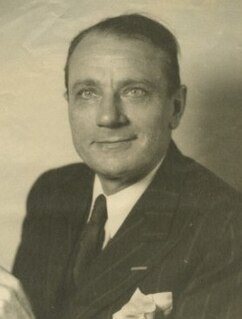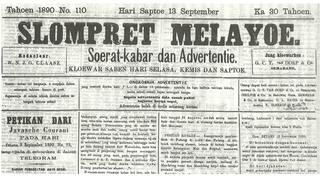
The Amsterdam Metro is a rapid transit system serving Amsterdam, Netherlands, and extending to the surrounding municipalities of Diemen and Ouder-Amstel. Until 2019 it also served the municipality of Amstelveen but this route has been closed for conversion into a tram line. The network is owned by the City of Amsterdam and operated by municipal public transport company Gemeente Vervoerbedrijf (GVB) which also operates trams, free ferries and local buses.

De Tijd is a Belgian newspaper that mainly focuses on business and economics. It is printed on salmon pink paper since May 2009, following the example of its colleagues Financial Times, Het Financieele Dagblad, FT Deutschland and many more.
Building information modeling (BIM) is a process supported by various tools, technologies and contracts involving the generation and management of digital representations of physical and functional characteristics of places. Building information models (BIMs) are computer files which can be extracted, exchanged or networked to support decision-making regarding a built asset. BIM software is used by individuals, businesses and government agencies who plan, design, construct, operate and maintain buildings and diverse physical infrastructures, such as water, refuse, electricity, gas, communication utilities, roads, railways, bridges, ports and tunnels.

Amsterdam Centraal Station is the largest railway station in Amsterdam in North Holland, Netherlands. A major international railway hub, it is used by 192,000 passengers a day, making it the second busiest railway station in the country after Utrecht Centraal and the most visited Rijksmonument of the Netherlands.
Pikiran Rakyat is a daily newspaper published in Bandung, West Java, Indonesia. Its circulation covers West Java and Banten Province.
Koninklijke Wegener NV was a Dutch publisher of newspapers. It was the largest publisher of daily regional newspapers, free local newspapers and special interest magazines in the Netherlands. It also sold internet products and graphical products. The company ceased to exist when it was acquired by Belgian media company De Persgroep in 2015.

Willem Anthony Engelbrecht, also known as Willem Anthonie Engelbrecht, was a Dutch jurist and colonial administrator. He was one of the originators of the so-called "Dutch Ethical Policy" in the Dutch East Indies.

The Nederlands Tijdschrift voor Geneeskunde is the main medical journal in the Netherlands, appearing weekly. Established in 1857, it is one of the world's oldest journals. Its publication language is exclusively Dutch. The journal is published and supported by the Vereniging NTvG, which is currently composed of 209 medical scientists. The current editor-in-chief is Yolanda van der Graaf. The Journal's headquarter is situated in Amsterdam, the Netherlands. From early on, the objective was to create an overarching and all-encompassing journal for medical professionals to exchange insights, knowledge and opinion, and to guarantee consistent progress throughout the country. At present, the main sections include: News, Opinion, Research, Clinical Practice, Perspective. Nowadays, the NTvG focuses on reviews and commentaries of research articles which are often published in English. Further, it continues to produce research of medical practice mainly in the Netherlands.

On 21 April 2012 at 18:30 local time, two trains were involved in a head-on collision at Westerpark, near Sloterdijk, in the west of Amsterdam, Netherlands. Approximately 117 people were injured, one of whom later died in hospital. The collision is thought to have been caused by the driver of one of the trains having passed a red signal.

Suharso, (1912–1971) also spelled Soeharso, was an Indonesian medical doctor known for his work with disabled people and in the rehabilitation of people injured during the Indonesian National Revolution. He was declared to be a National Hero of Indonesia in 1973.
Bintang Timur, also spelled Bintang Timoer before 1947, was a popular daily newspaper published in the Dutch East Indies and Indonesia.

Djawa Tengah was a major Malay-language peranakan Chinese daily newspaper in Semarang, Dutch East Indies from 1909 to 1938. It is said to have been the first Chinese newspaper in Semarang.

Batavia Dock, was a floating dry dock built for the Nederlands Indische Droogdok Maatschappij (NIDM) in the 1870s. It was the biggest of two unique tower dry docks, but would never be used.
Francisca Louisa Zecha (1848–1939), usually known as Louisa Zecha, was a prominent, colonial Indonesian community leader and the Indo-Bohemian matriarch of the Lauw-Sim-Zecha family, part of the 'Cabang Atas' gentry of the Dutch East Indies. She attracted significant attention due to her controversial interracial marriages to two Peranakan Chinese magnates, Lauw Tek Lok, Luitenant der Chinezen of Bekasi and Sim Keng Koen, Kapitein der Chinezen of Sukabumi. The posts of Kapitein and Luitenant der Chinezen were high-ranking civil administration positions in the Dutch colonial bureaucracy. Zecha's community leadership, philanthropy, personal bravery and longevity earned her widespread respect and admiration in colonial society by the time she died in 1939.
Parada Harahap was an important journalist and writer from the late colonial period and early independence era in Indonesia. In the 1930s, he was called the "king of the Java press". He pioneered a new kind of politically neutral Malay language newspaper in the 1930s which would cater to the rising middle class of the Indies.

Algemeen handelsblad voor Nederlandsch-Indië was a Dutch language newspaper which was published in Semarang, Dutch East Indies from 1924 to 1942.

George Antoon Philip Weijer (1891-1979) was a business representative in colonial Indonesia, an economics professor at the University of Utrecht, and a government advisor and company director in the Netherlands.
Warna Warta was a Malay language Peranakan Chinese newspaper published in Semarang, Dutch East Indies from 1902 to 1933. Alongside its more popular rival Djawa Tengah, it was highly influential among the Chinese Indonesian population of Semarang during this time.

Selompret Melajoe was one of the first Malay language newspapers to publish in the Dutch East Indies. It was printed in Semarang, Central Java from 1860 to 1920.
Jacobus Rudolph Razoux Kühr, commonly known as J. R. Razoux Kühr or Jack Razoux Kühr was an Indo civil servant and businessman from the Dutch East Indies largely remembered for being one of the first editors of the popular Chinese Indonesian newspaper Sin Po.












